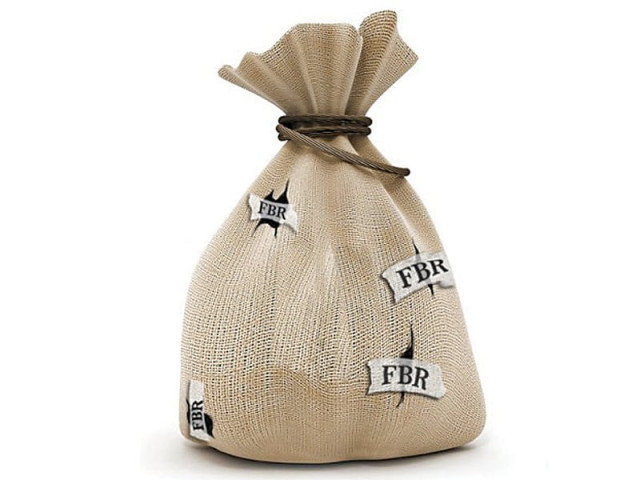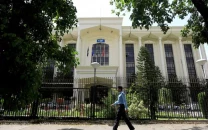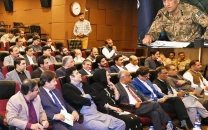Reinventing the wheel: How not to use the taxpayers’ money
Classic case of how the FBR squandered billions in the ever controversial PaCCS saga.

Reinventing the wheel: How not to use the taxpayers’ money
Using taxpayers money intelligently has become the yardstick of sound fiscal policy making all over the world. Efficient savings can be achieved at two levels of decision making. At the strategic level welfare maximisation depends on good decisions about sources of funds and their ultimate utilisation. At the operational level the concern for efficiency demands that every rupee of the taxpayers’ money is well spent. The leakage of money through loss making public sector enterprises in Pakistan is colossal at over Rs 600 billion a year. However the way strategic capital investment decisions are made is also a major cause of wasteful expenditure but is often not much scrutinised. Here I want to illustrate this point with the help of a case study of Federal Board of Revenue - the organisation which collects money from taxpayers and hence in theory should be most sensitive to the use of taxpayers’ money.
FBR embraced the need for automation of its customs service after the coercive pressure of world donor organisations became irresistible around 2005. Paying little heed to the need for a careful needs analysis and long term strategic thinking the knee jerk decision makers entered into a Public Private Partnership (PPP) contract with a Kuwait based IT firm Agility for provision of an automation system - Pakistan Automated Customs Computerised System (PaCCS) which was launched amid much fanfare by the management of FBR in 2005. According to a brief submitted to the Public Accounts Committee PaCCS project was completed at a cost of Rs 116.108 million against the approved cost of Rs55 million.
In 2009 I was associated with FBR for a few months before switching over to academia for good. One of the important policy level deliberations that I saw from a close quarter was the discontent with the PaCCS system. The then Member (Customs) asked me to carry out a research of the available automation systems so that a policy decision over replacement of PaCCS could be made. It was a surprise to find out that a web based automation system ASYCUDA World was already in existence when PaCCS was purchased. The system, developed by United Nations Conference on Trade and Development (UNCTAD), was available as a free software to the member countries. It had a low implementation period of four months and was successfully implemented in over 80 countries. Based on the brief prepared for the Member (Customs), the FBR made a recommendation to the Government that PaCCS should be abandoned and instead either ASYCUDA be adopted or other well tested platforms like TradeNet and UNIPASS be purchased.
The World Bank had been making its concerns known to the FBR on the pilot project of PaCCS and was advising it against rolling out PaCCS to all Customs terminals. It took many years for FBR to see what was obvious to any onlooker. Strategic investment decisions are like entering into a marriage. Entry is easy but coming out is far more painful. This is what happened in the case of PaCCS as well. The divorce proceedings between Agility, the owner of PaCCS and FBR turned ugly resulting in allegations and counter allegations. Beginning with threats of closure, Agility finally actually shut down Customs operations by withdrawing its software in July 2011 which resulted in revenue losses of millions of rupees to the government. The megalithic FBR awoke from deep slumber and as a result of negotiated deal the system was restored after 19 hours suspension.
In November, 2011 the FBR requested the Ministry of Finance for provision of additional funds to settle the row with Agility. The MOF was swift in conveying its refusal and advising home grown solution. The FBR had already paid agility $8.8 million and had agreed to pay about $0.8 million a month to settle the outstanding dues. In this connection, the FBR imposed an extra charge of Rs250 on import of consignments to help it pay the monthly dues to the Kuwaiti company.
To add insult to injury the unnecessary mega spending has another dark side as well. An enquiry committee headed by member (taxpayer audit), FBR in his report submitted before the Public Accounts Committee concluded that the fraud of removal of 265 containers without paying duty and tax occurred due to flaws in the PaCCS and its associated procedures.
In December 2011 the FBR finally began replacing PaCCS with a new system known as WeBOC (Web based One Customs) developed by its own IT professionals. The sudden switchover to a new system has created a situation of complaints and concerns among the users and it will take some time before the situation is fully normalised. All this means loss of revenue and increasing compliance costs of taxpayers.
There are many lessons to be learnt from this but the biggest moral of the story in this case is however not losing billions in trying to reinvent the wheel.
The writer teaches public policy in the UK and is the founding member of Rationalist Society of Pakistan.
Published in The Express Tribune, April 9th, 2012.

















COMMENTS
Comments are moderated and generally will be posted if they are on-topic and not abusive.
For more information, please see our Comments FAQ